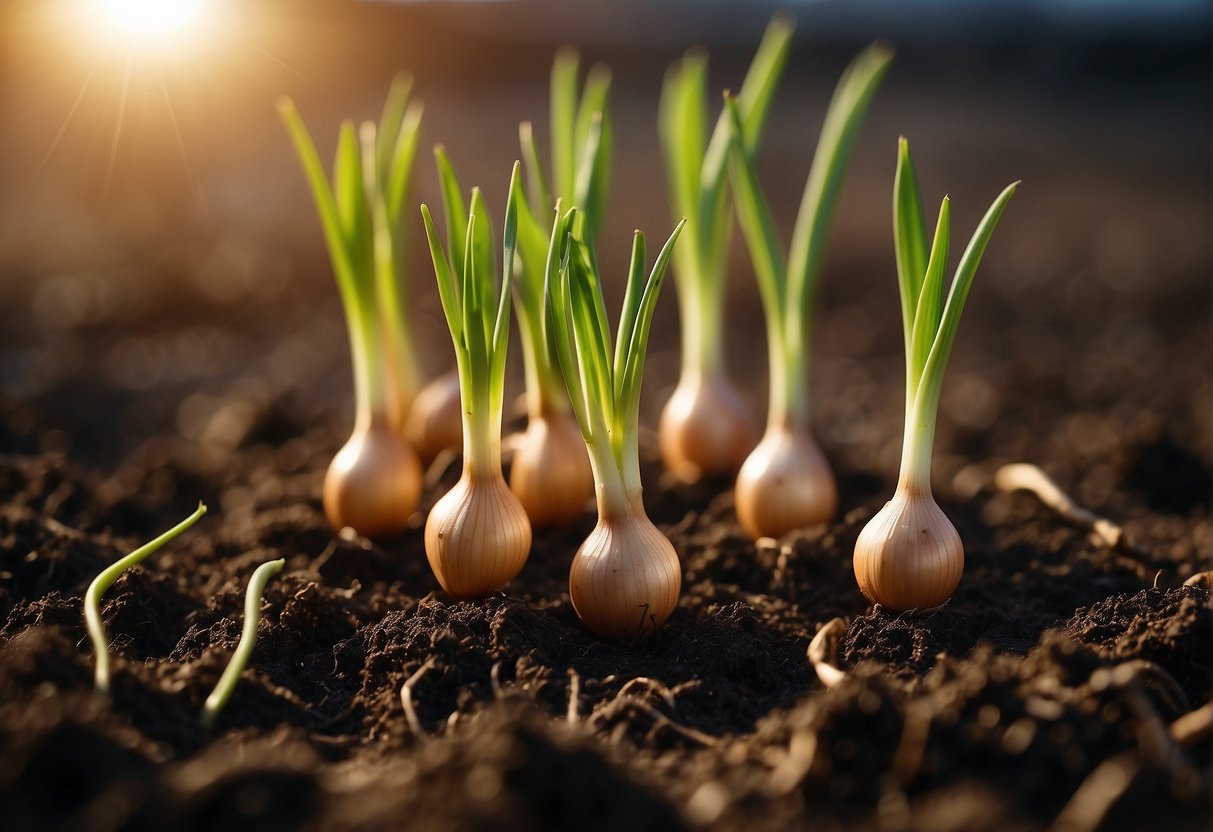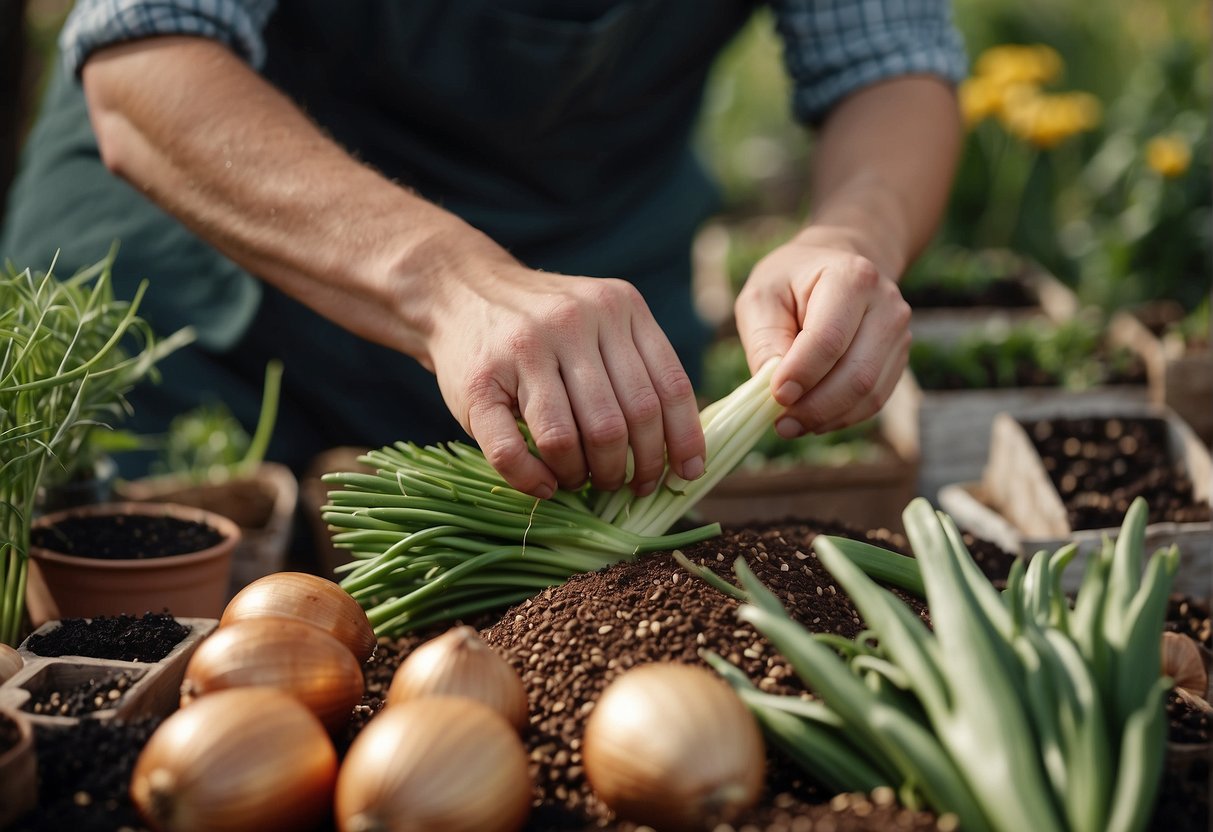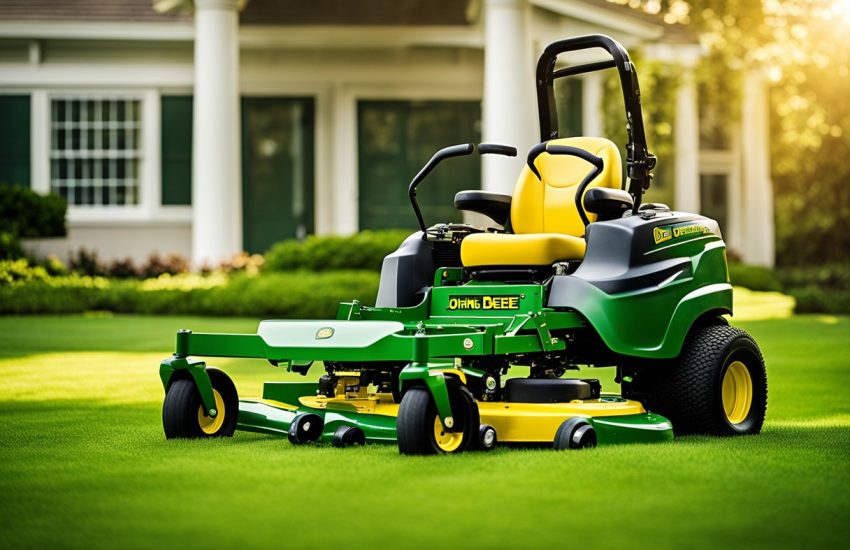How to Grow Shallots: A Comprehensive Guide
Shallots are a type of onion that are a staple in many kitchens around the world. They have a mild, sweet flavor that is perfect for adding depth to a wide range of dishes. Growing your own shallots is not only a great way to ensure that you always have them on hand, but it can also be a fun and rewarding experience. In this article, we will explore how to grow shallots so that you can enjoy this versatile vegetable in your own garden.

Before you start growing shallots, it is important to understand what they need to thrive. Shallots prefer well-draining soil that is rich in organic matter. They also require full sun, so it is important to choose a location for your shallots that receives at least six hours of direct sunlight each day. Once you have chosen a suitable location, you can start preparing the soil for planting.
Selecting the Right Varieties

Growing shallots can be a rewarding experience, especially when you have selected the right varieties. The following section will provide you with an overview of the different types of shallots and how to choose the right ones for your garden.
Understanding Shallot Types
Shallots belong to the Allium family and are closely related to onions and garlic. They are generally smaller and sweeter than onions, with a more delicate flavor. There are three main types of shallots: French, Dutch, and Persian.
French shallots are the most commonly grown variety and are known for their elongated shape and delicate, sweet flavor. They come in two main colors: French Red and French Gray. French Red shallots have a reddish-brown skin and a pinkish flesh, while French Gray shallots have a grayish-brown skin and a white flesh.
Dutch shallots are rounder and larger than French shallots, with a more pungent flavor. They are also known as “banana” shallots because of their shape. Dutch shallots are usually grown for their bulbs, which are often used in cooking.
Persian shallots are smaller and sweeter than French and Dutch shallots. They are often used in Middle Eastern and Mediterranean cuisine and are sometimes called “Jerusalem shallots.”
French vs Dutch Shallots
When it comes to choosing between French and Dutch shallots, it ultimately comes down to personal preference. French shallots are sweeter and more delicate, making them a great choice for salads and raw dishes. Dutch shallots, on the other hand, have a stronger flavor and are better suited for cooked dishes.
When selecting shallots, look for bulbs that are firm and free from soft spots or mold. It is also important to choose bulbs that are the right size for your needs. Larger bulbs will produce bigger shallots, while smaller bulbs will produce smaller shallots.
In conclusion, selecting the right varieties of shallots is an important step in growing a successful crop. Whether you choose French, Dutch, or Persian shallots, make sure to choose bulbs that are firm and the right size for your needs. With the right care and attention, you can enjoy a bountiful harvest of delicious shallots.
Preparing the Planting Site

Soil Requirements
Shallots grow best in well-drained soil that is rich in organic matter. The ideal soil pH for shallots is between 6.0 and 7.0. Before planting, test the soil pH and amend the soil if necessary to achieve the optimal range. Adding compost or other organic matter to the soil can also improve soil structure and fertility.
Choosing Location and Timing
Shallots can be planted in the early spring or fall, depending on the climate. In general, shallots prefer a sunny location with good drainage. If the garden soil is heavy or poorly drained, consider planting shallots in a raised bed.
When choosing a location, consider the amount of sunlight the area receives throughout the day. Shallots require full sun to grow and produce a good harvest. If the area is shaded for part of the day, it may not be the best location for growing shallots.
In summary, preparing the planting site is an important step in growing shallots. Choosing a location with good drainage and full sun, and amending the soil with compost or organic matter can help ensure a successful harvest.
Planting Process
Planting Shallot Sets
Shallots are planted using sets, which are small bulbs that have been grown from seed. These sets can be purchased from a garden center or online. When planting shallot sets, choose the largest ones available as they will produce the largest bulbs.
Spacing and Depth
Plant shallot sets in the ground in either spring or autumn, depending on your location. In general, shallots prefer cooler temperatures and can be planted as soon as the ground can be worked in the spring. They can also be planted in the fall for a harvest the following summer.
When planting, space shallot sets 8 inches apart and plant them 1-2 inches deep. Cover with soil and water well. Shallots prefer well-draining soil that is rich in organic matter.
To help retain moisture and suppress weeds, mulch around the shallots with a layer of straw or compost. This will also help to keep the soil cool and moist, which is important for shallot growth.
By following these planting tips, gardeners can successfully grow shallots in their home garden.
Care and Harvesting
Watering and Feeding
Shallots require regular watering to ensure proper growth. It is recommended to water them deeply once a week, especially during dry spells. However, be careful not to overwater them, as this can lead to rotting.
Feeding shallots with a balanced fertilizer once a month can help to improve their growth and yield. A fertilizer with a higher potassium content is recommended during the bulb development stage to promote bulb formation.
Disease and Pest Management
Shallots are prone to fungal diseases such as downy mildew and white rot. To prevent these diseases, it is important to plant shallots in well-draining soil and avoid overhead watering.
Pests such as onion maggots and thrips can also damage shallots. To prevent these pests, cover the plants with fleece or netting and practice crop rotation to avoid planting shallots in the same area for consecutive years.
When and How to Harvest
Shallots are ready to harvest when the leaves start to yellow and fall over. Carefully loosen the soil around the bulbs with a fork and gently pull the bulbs out of the ground. Allow the bulbs to dry in a warm, dry place for a week before trimming the roots and leaves.
Shallots can be stored in a cool, dry place for up to six months. Avoid storing them in areas with high humidity or direct sunlight, as this can cause them to sprout or rot.
By following these care and harvesting tips, growers can enjoy a bountiful harvest of delicious shallots.
Frequently Asked Questions

What is the proper depth for planting shallot bulbs?
Shallot bulbs should be planted at a depth of approximately 1 inch (2.5 cm). It is important to ensure that the pointed end of the bulb is facing upwards and the flat end is facing downwards. This will encourage proper growth and development.
Can shallots be cultivated indoors effectively?
Yes, shallots can be successfully grown indoors in containers. It is important to ensure that the container is large enough to accommodate the shallot bulb and that it has good drainage. Additionally, indoor shallots may require additional light to ensure proper growth.
What is the typical growth duration for shallots from planting to harvest?
Shallots typically take between 90 and 120 days to reach maturity after planting. However, the exact duration may vary depending on factors such as temperature, soil quality, and moisture levels.
How should shallot bulbs be divided for optimal planting?
Shallot bulbs should be carefully separated into individual cloves before planting. Each clove should be planted with the pointed end facing upwards and the flat end facing downwards. It is important to ensure that each clove is planted at the proper depth and with adequate spacing to encourage optimal growth.
Are shallots a perennial plant that will regrow annually?
Shallots are a biennial plant, meaning that they will produce foliage and bulbs in their first year and then flower and go to seed in their second year. However, shallots can be propagated by planting individual cloves, allowing for continuous production.
What plants should be avoided when companion planting with shallots?
Shallots are known to have a beneficial effect on plants such as carrots, lettuce, and strawberries. However, they should not be planted near plants from the allium family, such as garlic and onions, as they can compete for nutrients and may be susceptible to the same pests and diseases.

